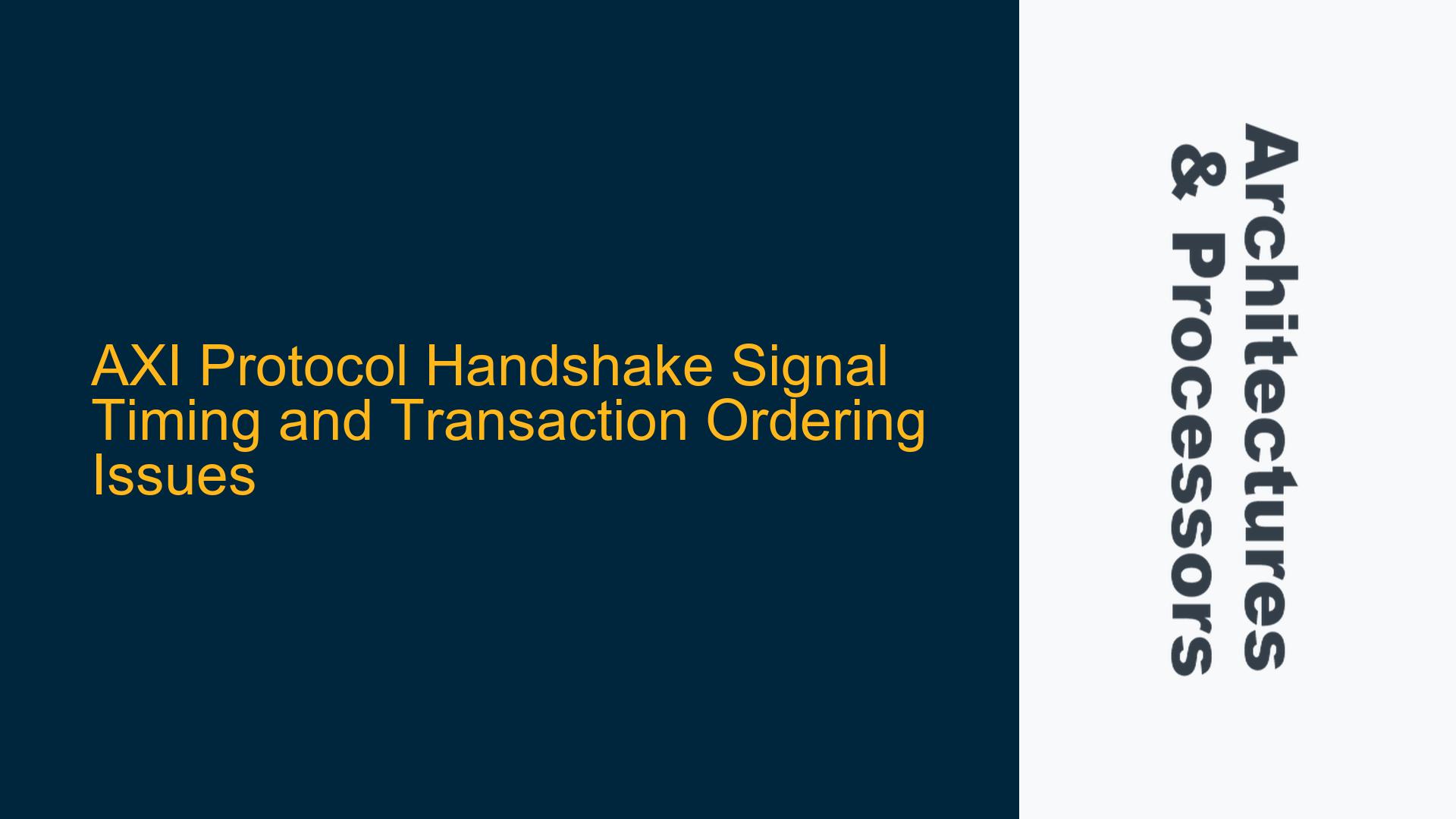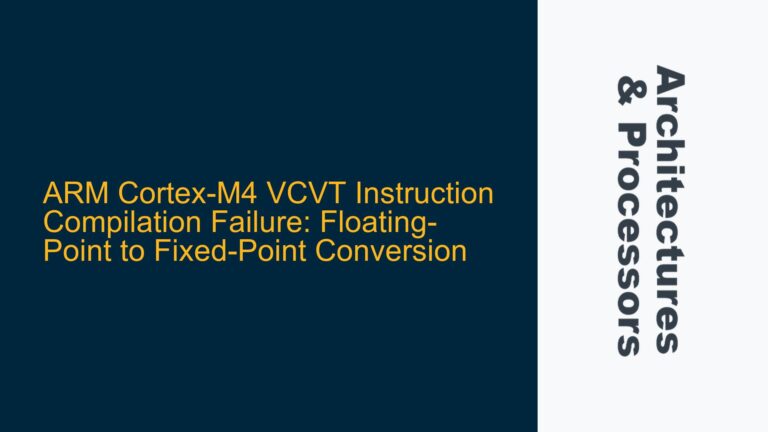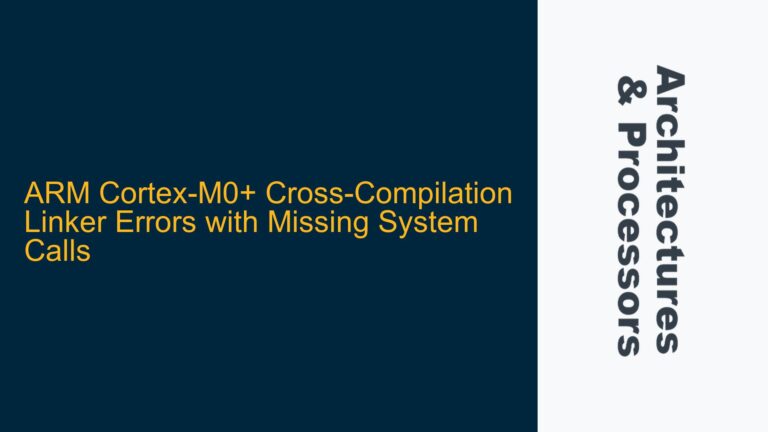WVALID, WREADY, and BVALID Signal Assertion Timing Constraints
The Advanced eXtensible Interface (AXI) protocol is a high-performance, high-frequency microcontroller bus interface that is widely used in ARM-based systems. One of the critical aspects of the AXI protocol is the handshake mechanism between the master and slave devices, which ensures reliable data transfer. The handshake signals, including WVALID, WREADY, and BVALID, play a crucial role in this process. However, their timing and assertion constraints can lead to confusion and potential issues if not properly understood.
WVALID is a signal from the master indicating that the write data and associated control information are valid and stable. WREADY is a signal from the slave indicating that it is ready to accept the write data. BVALID is a signal from the slave indicating that the write response is valid. According to the AXI protocol, WVALID, WREADY, and BVALID can all be asserted in the same cycle, but not for the same transaction. This means that while these signals can overlap in time, they must correspond to different transactions to avoid protocol violations.
The AXI protocol specifies that BVALID can only be asserted by the slave after the final WVALID/WREADY handshake has completed. This dependency ensures that the write response is only provided after the write data has been successfully transferred. If BVALID were to be asserted simultaneously with WVALID and WREADY for the same transaction, it would violate the protocol’s timing requirements, leading to undefined behavior and potential data corruption.
Understanding these timing constraints is essential for designing and debugging AXI-based systems. Misalignment in the assertion of these signals can result in data transfer errors, system instability, and difficult-to-diagnose issues. Therefore, it is crucial to carefully review the AXI protocol specification, particularly the section on dependencies between channel handshake signals, to ensure compliance with these timing requirements.
Interleaving and Out-of-Order Transaction Mechanisms in AXI
The AXI protocol supports advanced features such as interleaving and out-of-order transactions, which can enhance system performance by optimizing bus utilization and reducing latency. However, these features also introduce complexity that must be carefully managed to avoid errors and ensure correct system operation.
Interleaving refers to the merging of data streams from different transactions with unique IDs on consecutive cycles. This mechanism allows the AXI bus to make better use of available bandwidth, particularly when an earlier transaction cannot supply valid data on consecutive cycles. In AXI3, interleaving is supported for both read and write transactions. However, in AXI4, interleaving is no longer supported for write transactions, which simplifies the protocol but reduces the potential for bandwidth optimization in certain scenarios.
Out-of-order transactions, on the other hand, allow the AXI bus to complete transactions in a different order than they were initiated by the master. This feature is particularly useful in systems where different transactions have varying latencies, as it allows the bus to prioritize the completion of faster transactions, thereby reducing overall system latency. Out-of-order transactions are identified by their unique IDs, which ensure that the master and slave can correctly associate responses with the corresponding transactions.
The distinction between interleaving and out-of-order transactions is crucial for understanding how the AXI bus manages data flow and transaction ordering. Interleaving focuses on optimizing data transfer efficiency by merging data streams, while out-of-order transactions focus on reducing latency by reordering transaction completion. Both mechanisms rely on the use of unique transaction IDs to maintain data integrity and ensure correct operation.
In practical terms, interleaving and out-of-order transactions can significantly improve system performance, but they also require careful design and verification to avoid issues such as data corruption, deadlock, and race conditions. Designers must ensure that the AXI bus and associated components correctly handle these features, particularly in complex systems with multiple masters and slaves.
Implementing Correct AXI Handshake Timing and Transaction Ordering
To ensure correct operation of an AXI-based system, it is essential to implement proper handshake timing and transaction ordering mechanisms. This involves careful design of the master and slave interfaces, thorough verification of the system, and adherence to the AXI protocol specifications.
For handshake timing, designers must ensure that WVALID, WREADY, and BVALID signals are asserted in compliance with the protocol’s timing constraints. This includes ensuring that BVALID is only asserted after the final WVALID/WREADY handshake has completed for a given transaction. Violations of these timing constraints can lead to data transfer errors and system instability, so it is crucial to verify the timing of these signals during the design and testing phases.
For transaction ordering, designers must carefully manage interleaving and out-of-order transactions to optimize system performance while maintaining data integrity. This includes ensuring that unique transaction IDs are correctly assigned and that the AXI bus and associated components can handle interleaved and out-of-order transactions without errors. In AXI4, designers must also be aware that interleaving is no longer supported for write transactions, which simplifies the protocol but requires adjustments in system design to maintain performance.
In addition to design considerations, thorough verification is essential to ensure correct operation of the AXI bus. This includes simulation and testing of the system under various conditions to verify that handshake timing and transaction ordering are correctly implemented. Designers should also consider using formal verification techniques to rigorously prove that the system adheres to the AXI protocol specifications.
In summary, implementing correct AXI handshake timing and transaction ordering requires a deep understanding of the AXI protocol, careful design of the master and slave interfaces, and thorough verification of the system. By adhering to these principles, designers can ensure reliable and efficient operation of AXI-based systems, avoiding common pitfalls and optimizing system performance.






